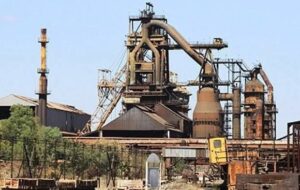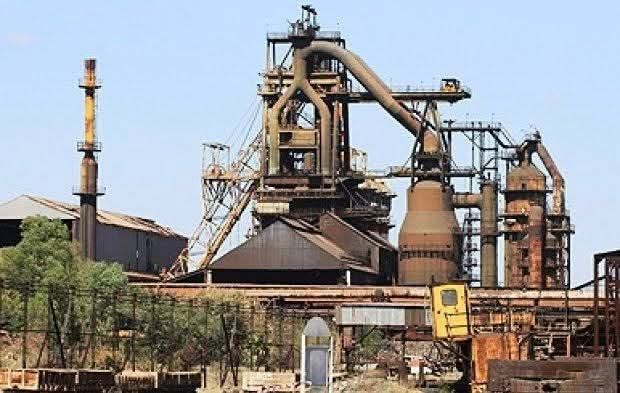
By Adeyemi Adekunle
To secure the future of its steel industry and transition towards sustainable manufacturing, the Australian government has unveiled a comprehensive $1 billion AUD ($636 million USD) Green Iron Investment Fund. This initiative is expected will bolster green iron production and its associated supply chains, with a significant portion earmarked to rescue the beleaguered Whyalla Steelworks in South Australia.
The Green Iron Investment Fund is designed to support pioneering projects in green iron manufacturing, facilitating the decarbonization of Australia’s steel industry. Prime Minister Anthony Albanese emphasized the strategic importance of this investment, stating, “Investment in green iron and steel will secure future demand for Australia’s iron ore as the world moves toward lower-emissions iron and steel.” This initiative aligns with Australia’s broader strategy to harness the clean energy transition, stimulate manufacturing growth, and add value to its critical minerals sector.
A critical component of this fund is the allocation of up to $500 million AUD to stabilize and transform the Whyalla Steelworks. Recently placed into administration due to financial distress under the ownership of Sanjeev Gupta’s GFG Alliance, the steelworks faced an uncertain future. The South Australian government intervened, citing unpaid bills and a lack of necessary investment as catalysts for the takeover.
Prime Minister Albanese, alongside South Australian Premier Peter Malinauskas, announced a comprehensive $2.4 billion AUD rescue package for Whyalla. This package includes immediate operational support and substantial investments aimed at upgrading the facility to produce green steel. Premier Malinauskas highlighted the significance of this intervention, stating, “Locally-made steel is vital to South Australia and Australia’s future, and this unprecedented investment recognizes the importance of the Whyalla Steelworks.”
Central to the transformation of Whyalla Steelworks is the planned shift from traditional blast furnace methods to an electric arc furnace (EAF) system powered by renewable energy sources, including green hydrogen. This transition is expected to significantly reduce carbon emissions associated with steel production. However, industry experts caution that the implementation of EAF technology presents logistical and financial challenges, particularly concerning the sourcing of scrap metal and the substantial capital investment required.
The steel industry is a cornerstone of Australia’s economy, with iron ore exports generating over $100 billion AUD in the 2023-24 fiscal year. The sector supports more than 100,000 direct and indirect jobs nationwide. Transitioning to green steel production is not only a strategic economic move but also an environmental imperative. Iron and steel manufacturing accounts for approximately 8% of global carbon emissions, underscoring the need for sustainable practices.
The Minerals Institute of Western Australia projects that a single green iron plant could contribute up to $85 billion AUD to the nation’s gross domestic product, create 1,540 full-time jobs, and add $2.4 billion AUD in real income annually. These figures highlight the substantial economic benefits of investing in green iron technologies.
The government’s bold investment has elicited a spectrum of responses from industry stakeholders and political figures. While many applaud the commitment to sustainable manufacturing and job preservation, some express skepticism regarding the economic viability of green hydrogen as a fuel source for steel production.
Opposition Leader Peter Dutton voiced concerns, stating, “We need to make sure that the Prime Minister explains to Australians how green hydrogen is going to work because the electricity cost is much higher than what Whyalla would be paying now.” This sentiment reflects broader apprehensions about the feasibility and cost-effectiveness of large-scale green hydrogen applications in heavy industry.
**A Vision for Australia’s Industrial Future**
The establishment of the Green Iron Investment Fund and the rescue of Whyalla Steelworks signify a crucial moment in Australia’s industrial landscape. By embracing green technologies and sustainable practices, the nation aims to position itself as a leader in the global shift towards low-emission manufacturing.
Prime Minister Albanese explained this vision, stating, “Labor’s plan for a Future Made in Australia is very clear: we want Australia to make more things here. That’s why my Government is delivering $1 billion for our Green Iron Investment Fund.” This commitment reflects an effort to revitalize domestic manufacturing, reduce environmental impact, and ensure economic resilience in a rapidly evolving global market.
This Funding represents a transformative approach to addressing the challenges facing its steel industry. By providing critical support to facilities like Whyalla Steelworks and investing in sustainable technologies, the government is not only safeguarding jobs and local economies but also paving the way for a greener, more competitive industrial future.




